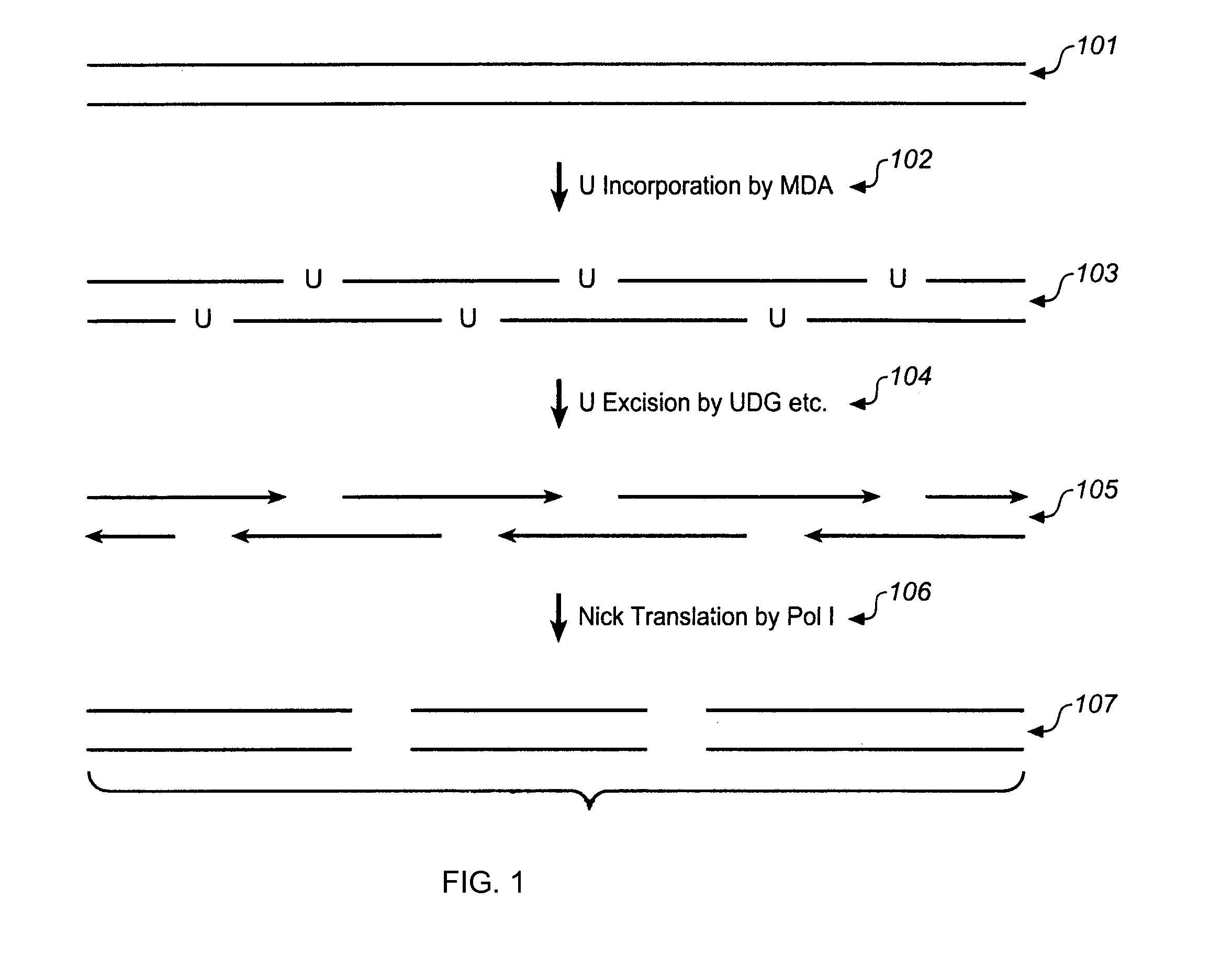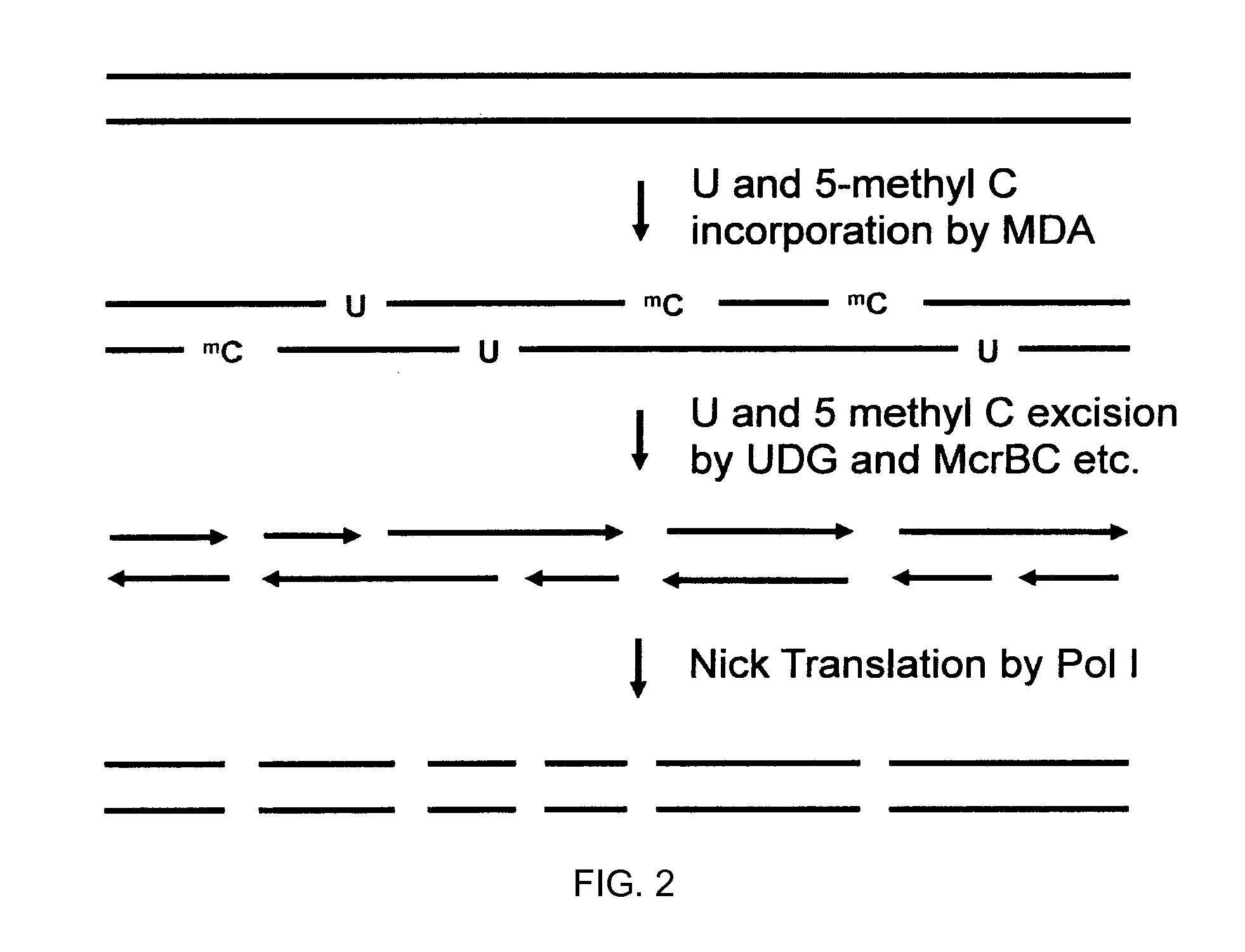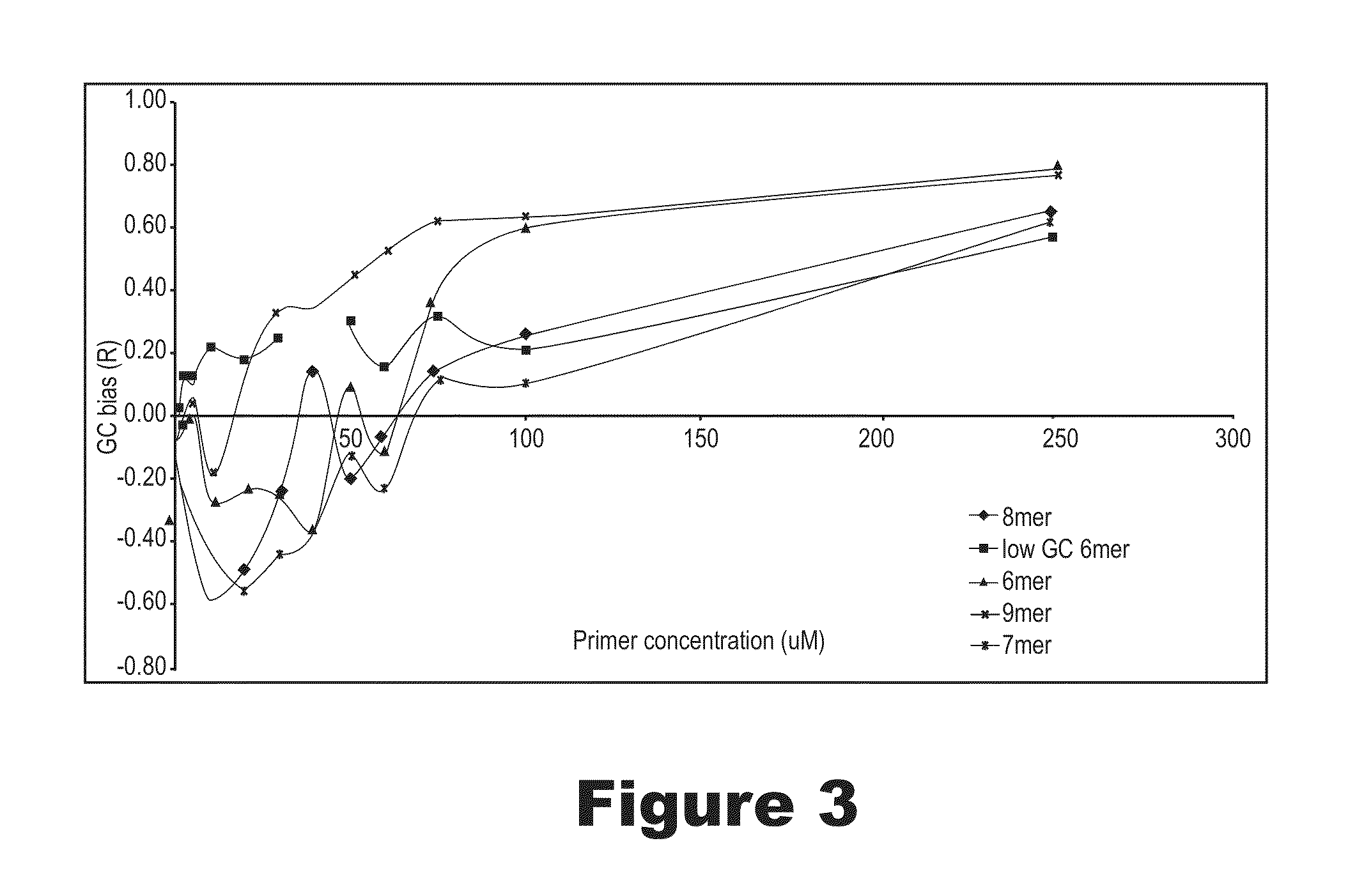Methods and compositions for long fragment read sequencing
a technology of fragment read and composition, applied in the direction of sequential/paralleled process reactions, microorganism testing/measurement, biological apparatus and processes, etc., can solve the problems of unsuitable single-molecule sequencing methods, significant limits on overall sequencing efficiency, and limited conventional methods of sequencing, so as to achieve less gc bias, less coverage bias, and less gc bias
- Summary
- Abstract
- Description
- Claims
- Application Information
AI Technical Summary
Benefits of technology
Problems solved by technology
Method used
Image
Examples
example 1
Overview of LFR Technology
[0461]As illustrated in FIG. 30(A), genomic DNA is released from 1-100 cells and maintained as long fragments from 100 kb to 1 mb in size. DNA is replicated if a few cells are used. Blue represents the maternal and red the paternal fragment of a selected loci. In FIG. 30 (B), the long genomic DNA is split into 1000 to 100,000 aliquots (e.g., a 1536- or 6144-well plate or >10,000 nanoliter drops such as in RainDance or Advanced Liquid Logic systems) containing 1% or as low as 0.01% of a haploid genome (1-1,000 fragments per aliquot). In FIG. 30 (A) step c, DNA is amplified (not necessary for some platforms) by phi29 polymerase (resulting DNA can be shorter than original), enzymatically fragmented to 100-10,000 bp (standard is 500 bp), and uniquely bar-coded in each aliquot via combinatorial DNA adapter ligation with unique 6- to 12-mer sequence. In FIG. 30 (A) step d, aliquots are pooled into a single reaction. In FIG. 30 (A) step e barcoded DNA is incorpora...
example 2
Miniaturization of LFR
[0462]As shown in FIG. 28 step a, 96-384 uniquely barcoded half adapters from Set A and Set B are combined in a pair wise fashion into about 10K-150K distinct individual combinatorial adapter oil-water droplets. In FIG. 28 step b, up to 10 billion combinatorial adapter droplets in 10 ml are formed (in a few days) and stored. This amount is sufficient to process over 1000 human samples. In FIG. 28 step c, combinatorial adapter droplets from step b are fed into a microfluidic device and merged one-to-one with drops of amplified fragmented DNA generated from sub-genome aliquots of >100 kb fragments, FIG. 28 step d, fragmented DNA in 10,000 or more emulsion droplets is ligated to unique combinatorial adapters. In FIG. 28 step e is shown a magnified view of a combinatorial adapter. Yellow represents 4-6 bps components of barcode sequence; blue and red represent Set A and Set B common adapter sequence, respectively. Set A and B adapters have 2-4 bps of complementary ...
example 3
Using LFR Data to Define Haplotypes
[0463]An example of a consensuses chromosomal sequence with 4 heterozygote sites at variable distances of 3 to 35 kb is depicted in FIG. 29. Starting from the left, the percent of shared aliquots (PSA) is calculated for each pair of neighboring alleles. The numbers for 4 possible pairs are written in the following order: top-top, top-bottom, bottom-top, and bottom-bottom (e.g., numbers 7, 87, 83, and 0) for the 7 kb segment correspond to A-C, A-T, G-C and G-T pairs, respectively. If 20 cells are used an allele can be found in 20 or less aliquots. For A-C and A-T pairs only A aliquots lacking G are used. For G-C and G-T pairs only G aliquots lacking A are used. For A-T pair, if A without G is present in 15 aliquots, T is present in 17 aliquots and A and T are present together in 13 aliquots, the PSA is 13 / 15=87%.
PUM
| Property | Measurement | Unit |
|---|---|---|
| volumes | aaaaa | aaaaa |
| temperature | aaaaa | aaaaa |
| temperature | aaaaa | aaaaa |
Abstract
Description
Claims
Application Information
 Login to View More
Login to View More - R&D
- Intellectual Property
- Life Sciences
- Materials
- Tech Scout
- Unparalleled Data Quality
- Higher Quality Content
- 60% Fewer Hallucinations
Browse by: Latest US Patents, China's latest patents, Technical Efficacy Thesaurus, Application Domain, Technology Topic, Popular Technical Reports.
© 2025 PatSnap. All rights reserved.Legal|Privacy policy|Modern Slavery Act Transparency Statement|Sitemap|About US| Contact US: help@patsnap.com



